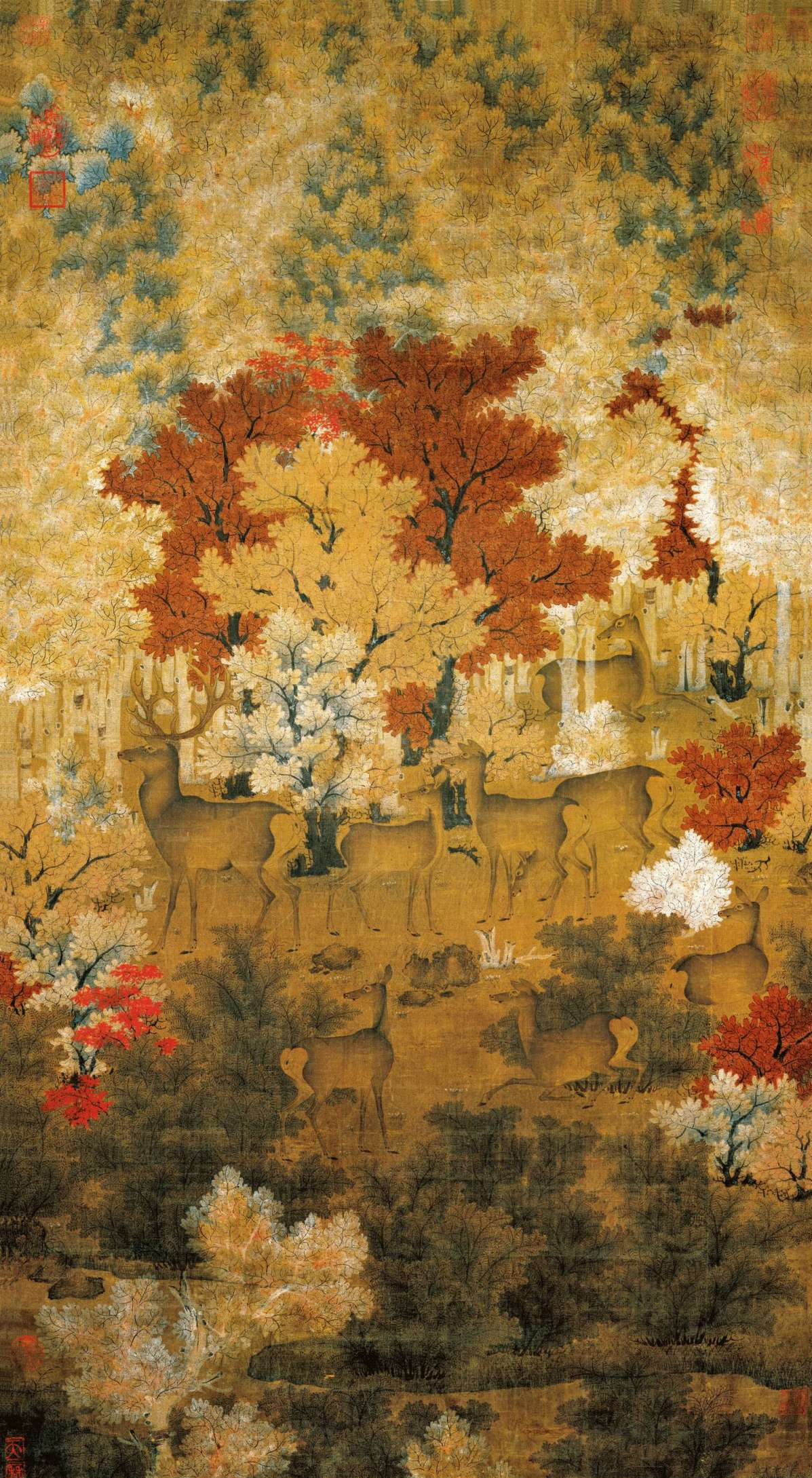deer park
empty mountain: no one to be seen
but the sound of voices does echo
sunset’s rays enter the forest depths
luminous again on green moss, highest
Jack Hayes
© 2016
based on Wang Wei: 鹿柴
lù zhài
day and night feel the cold mountain,
share the ease of its lone tenant—
with no knowledge of the deep groves
we have only the stone deer trail
Sheila Graham-Smith
© 2016
based on Pei Di: 鹿柴
lù zhài
Note: These poems are from the 辋川集 (Wǎngchuān jí) or “Wheel River Collection” composed by Wang Wei & Pei Di. As mentioned in previous posts, the “Wheel River Collection” consists of 20 paired poems, each one a jueju or quatrain, describing locations on Wang Wei’s estate in what is now Lantian County.
Readers who are interested in “deer park” should certainly consult Nineteen Ways of Looking at Wang Wei by Eliot Weinberger & Octavio Paz, a study of 19 different translations of Wang Wei’s quatrain. While there are many translations of Wang Wei’s “Wheel River” poems, the companion poems by Pei Di have not been well represented in English. There’s currently only one complete version of all 20 paired poems, & that’s in the now out-of-print Poems of Solitude by Jerome Ch’en & Michael Bullock. A collection of 13 of the 20 pairs can also be found in A Drifting Boat: Chinese Zen Poetry, edited by JP Seaton & Dennis Maloney; the translations themselves are by Jospeh Lisowski.
There is an interesting textual crux in the fourth line of the Pei Di poem. The line could read either但有鹿石跡 or但有鹿段跡, in other words, in literal English: “only have deer stone track” or “only have deer section track”. Sheila opted for the former reading in her translation (interestingly, the two existing English translation deftly avoid the problem by translating neither character). Her research turned up the fact that deer statuary often appears at Buddhist temples & in Buddhist sacred images; specifically, she found reference to the deer statues that gave the name to the Buddhist temple at Lumen Shan (Deergate Mountain), where poet Meng Haoran lived for a time. Meng Haoran was a friend of both Wang Wei & Pei Di.
Sheila writes, “My theory is that with deer park Pei Di is answering Wang Wei's abstract unknowable mountain with the direct advice that he feel the cold of it. That is, he brings the mountain back to a real and significant daily presence, a direct experience. The second line answers the absence of humans in Wang Wei's poem with the presence of the solitary guest on the mountain. In the second couplet he takes Wang Wei's remark about the return of the light to the forest (enlightenment) and claims no knowledge of the forest ways, then he take Wang Wei's final line about the sun striking the "single spot of life" and parallels it with what would be an obvious allusion in his time and context to the path of enlightenment, which is all he needs. It seems that a reference to Deer Gate would be immediately recognisable to any educated man in Wang Wei's society as an allusion to a secluded life of culture and spiritual pursuits. Wang Wei never mentions deer in his poem but Pei Di does, by the playful introduction of the stone deer on the path.”
Image links to its source on Wiki Commons:
“Herd of Deer in a Maple Grove”: Anonymous
(丹楓呦鹿圖)
circa 951 A.D.-968 A.D.; ink and colors on silk

No comments:
Post a Comment
Thanks for stopping by & sharing your thoughts. Please do note, however, that this blog no longer accepts anonymous comments. All comments are moderated. Thanks for your patience.